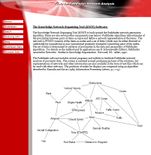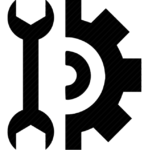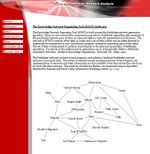KNOT: Difference between revisions
Jump to navigation
Jump to search
(Created page with "{{Data mining and learning analytics tools |field_logo= |field_screenshot= |field_name=Knowledge Network Organizing Tool (KNOT) |field_developers= |field_website=http://interl...") |
No edit summary |
||
| (3 intermediate revisions by one other user not shown) | |||
| Line 1: | Line 1: | ||
{{Data mining and learning analytics tools | {{Data mining and learning analytics tools | ||
|field_logo= | |field_logo= | ||
|field_screenshot= | |field_screenshot=Knot.jpg | ||
|field_name=Knowledge Network Organizing Tool (KNOT) | |field_name=Knowledge Network Organizing Tool (KNOT) | ||
|field_developers= | |field_developers= | ||
| Line 12: | Line 12: | ||
|field_last_release= | |field_last_release= | ||
|field_last_version= | |field_last_version= | ||
|field_description=Quote from the [http://interlinkinc.net/KNOT.html software home page] (11(2014): The Knowledge Network Organizing Tool (KNOT) is built around the Pathfinder network generation algorithm. There are also several other components (see below). Pathfinder algorithms take estimates of the proximities between pairs of items as input and define a network representation of the items. The network (a PFNET) consists of the items as nodes and a set of links (which may be either directed or undirected for symmetrical or non-symmetrical proximity estimates) connecting pairs of the nodes. The set of links is determined by patterns of proximities in the data and parameters of Pathfinder algorithms. For details on the method and its applications see R. Schvaneveldt (Editor), Pathfinder Associative Networks: Studies in Knowledge Organization. Norwood, NJ: Ablex, 1990. | |field_description=Quote from the [http://interlinkinc.net/KNOT.html software home page] (11(2014): | ||
{{quotationbox| The Knowledge Network Organizing Tool (KNOT) is built around the Pathfinder network generation algorithm. There are also several other components (see below). Pathfinder algorithms take estimates of the proximities between pairs of items as input and define a network representation of the items. The network (a PFNET) consists of the items as nodes and a set of links (which may be either directed or undirected for symmetrical or non-symmetrical proximity estimates) connecting pairs of the nodes. The set of links is determined by patterns of proximities in the data and parameters of Pathfinder algorithms. For details on the method and its applications see R. Schvaneveldt (Editor), Pathfinder Associative Networks: Studies in Knowledge Organization. Norwood, NJ: Ablex, 1990. | |||
The Pathfinder software includes several programs and utilities to facilitate Pathfinder network analyses of proximity data. The system is oriented around producing pictures of the solutions, but representations of networks and other information are also available in the form of text files which can be used with other software. The positions of nodes for displays are computed using an algorithm described by Kamada and Kawai (1989, Information Processing Letters, 31, 7-15). | The Pathfinder software includes several programs and utilities to facilitate Pathfinder network analyses of proximity data. The system is oriented around producing pictures of the solutions, but representations of networks and other information are also available in the form of text files which can be used with other software. The positions of nodes for displays are computed using an algorithm described by Kamada and Kawai (1989, Information Processing Letters, 31, 7-15).}} | ||
|field_analysis_orientation=General analysis | |field_analysis_orientation=General analysis | ||
|field_data_analysis_objective= | |field_data_analysis_objective= | ||
| Line 34: | Line 35: | ||
|field_last_edition=2014/11/11 | |field_last_edition=2014/11/11 | ||
}} | }} | ||
== | == Pathfinder == | ||
{{quotation|A Pathfinder network is derived from proximities for pairs of entities. Proximities can be obtained from similarities, correlations, distances, conditional probabilities, correlations, cosines or any other measure of the relationships among entities. The entities are usually concepts of some sort, but they can be anything with a pattern of relationships. In the Pathfinder network, the entities correspond to the nodes of the generated network, and the links in the network are determined by the patterns of proximities.}} ([http://interlinkinc.net/JPathfinder.doc Download JPathfinder.doc]) | |||
== Manuals == | |||
* Another option is Schuelke, M. J. (2012). [http://endaemon.net/ | * [http://interlinkinc.net/JPathfinder.doc Download JPathfinder.doc] | ||
* [http://interlinkinc.net/Quick_JPathfinder.doc Download JPathfinder Quick Guide] | |||
There is a large bibliography of research using pathfinder: | |||
* [http://interlinkinc.net/References.html References] | |||
== Functionality of the software == | |||
Typically KNOT input is an output of some prior data mining / aggregation process. I.e. you need a proximity matrix (called *.prx files). These are simple text files that require some simple, but strict formatting rules as explained on pages 5ff of the manual: | |||
:Line 1: Identification as data file = Data/DATA/data (must contain the word “data”); | |||
:Line 2: Type of data = dissimilarity /distance /dis/similarity/sim/probability/prob/ | |||
:Line 3: Number of nodes = integer | |||
:Line 4: This line can contain anything, but it must be present. It will appear as “Info” in the Get Proximity Info table. | |||
:Line 5: Minimum data value = real number | |||
:Line 6: Maximum data value = real number | |||
:Line 7: Order of data values = matrix/upper/lower/list/coord/featur/attrib | |||
:Line 8: Data | |||
:Line 9: Data ... | |||
* For example, [[ALA-Reader]] can produce so-called prx files. | |||
* Another option is Schuelke, M. J. (2012). [http://endaemon.net/jRateSuite jRateSuite], a set of free Java based proximity data collection programs. Five different data collection activities are available, but each outputs proximity files (prx) that can be analyzed by PCKNOT. | |||
The functions supported by the KNOT software are: | The functions supported by the KNOT software are: | ||


